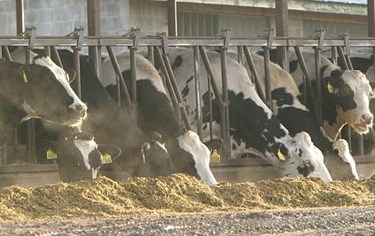Antibiotic Use Is OK In Livestock Production, Says NY Court

By Sam Lewis

The U.S. Second Circuit Court of Appeals in New York has decided the FDA is not required to hold investigations regarding the safety of giving antibiotics to animals raised for food at sub-therapeutic levels
On Thursday, July 24 a 2-1 decision was reached by the U.S. Second Circuit Court of Appeals in New York saying the FDA needs not hold hearings concerning the use of antibiotics in livestock production. The ruling upends two rulings from 2012 in a case filed by the Natural Resources Defense Council (NRDC), the Center for Science in the Public Interest, Food Animal Concerns Trust, Public Citizen, and the Union of Concerned Scientists in 2011.
According the organizations, the FDA should be required to hold hearings that determine if the use of penicillin and tetracylcines in animal feed after the agency stated that the use of sub-therapeutic drugs in animal feed was “not been shown to be safe.” These hearings would be obligatory for the industry to show the use of antibiotics, as approved, is a safe practice. “If they were not able to do that, then FDA would have to proceed with withdrawing the approvals for those drugs, which would effectively ban those drugs in animals for food production,” says Keeve Nachman, a scientist at the Johns Hopkins Center for a Livable Future. According to NRDC, not requiring hearings means the FDA will not have to consider banning the practice of antibiotic use in raising healthy animals.
“Today’s decision allows the FDA to openly declare that a particular animal drug is unsafe, but then refuses to withdraw approval of that drug,” writes Judge Robert Katzmann. “It also gives the agency discretion to effectively ignore a public petition asking it to withdraw approval from an unsafe drug. I do not believe the statutory scheme can be read to permit those results.”
The FDA argues that Guidance 213 — banning the use of antibiotics for growth promotion in animals produced for food — is an alternative method for dealing antibiotic-resistant diseases. However, groups such as NRDC say it won’t be effective at limiting farm antibiotic use because labels claiming disease prevention will replace the label of growth promotion. “Because of the link between antibiotic use in food-producing animals and the occurrence of antibiotic-resistant infections in humans, antibiotics should be used in food-producing animals only under veterinary oversight and only to manage and treat infectious diseases, not to promote growth,” states the Center for Disease Control and Prevention’s (CDC) report on threats of antibiotic resistant bacteria, release last year.
According to Nachman, the decision was a “big blow to public health.” No announcement to appeal the decision has been made by NRDC, but Nachman expects the group will do so.
